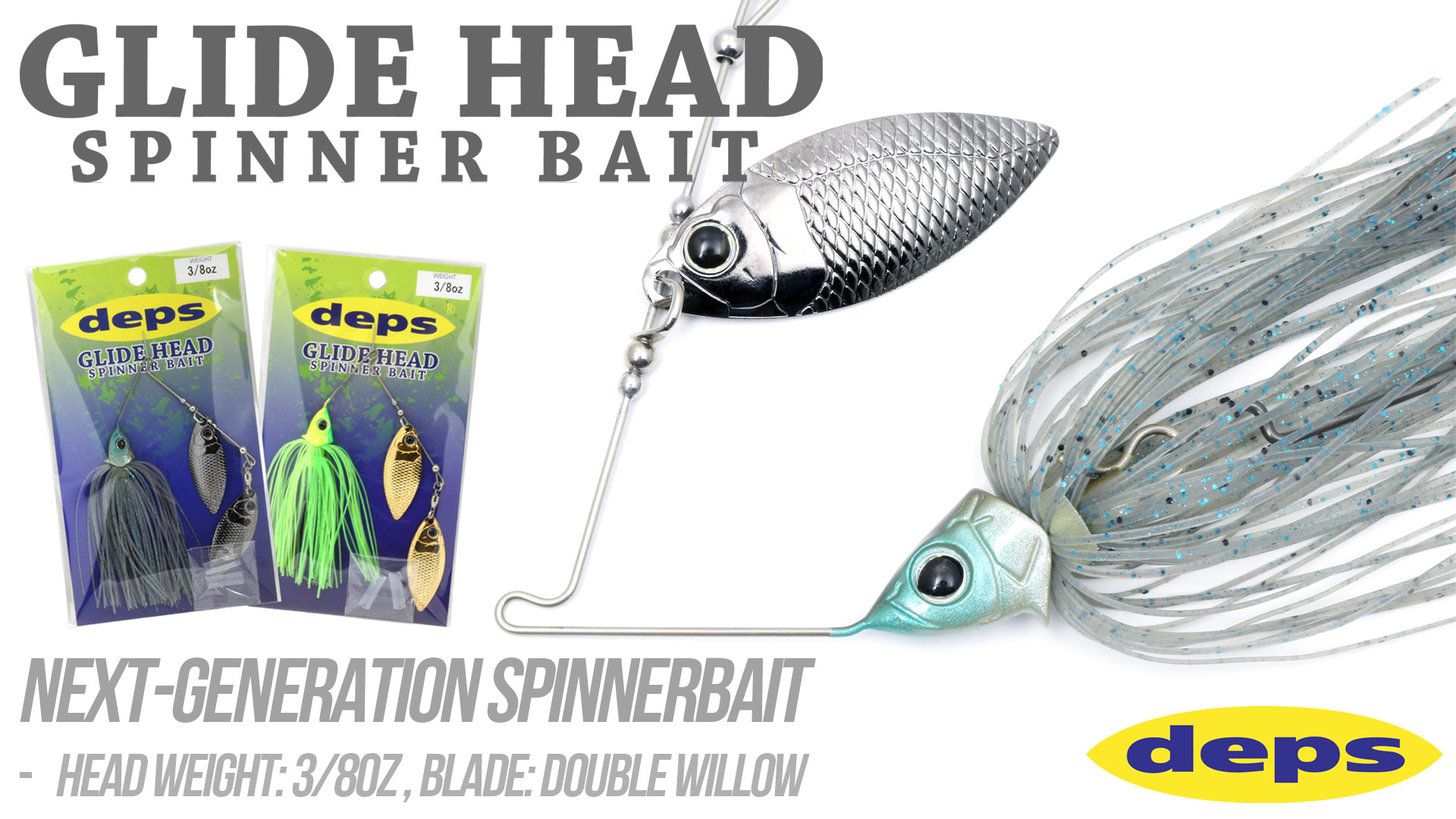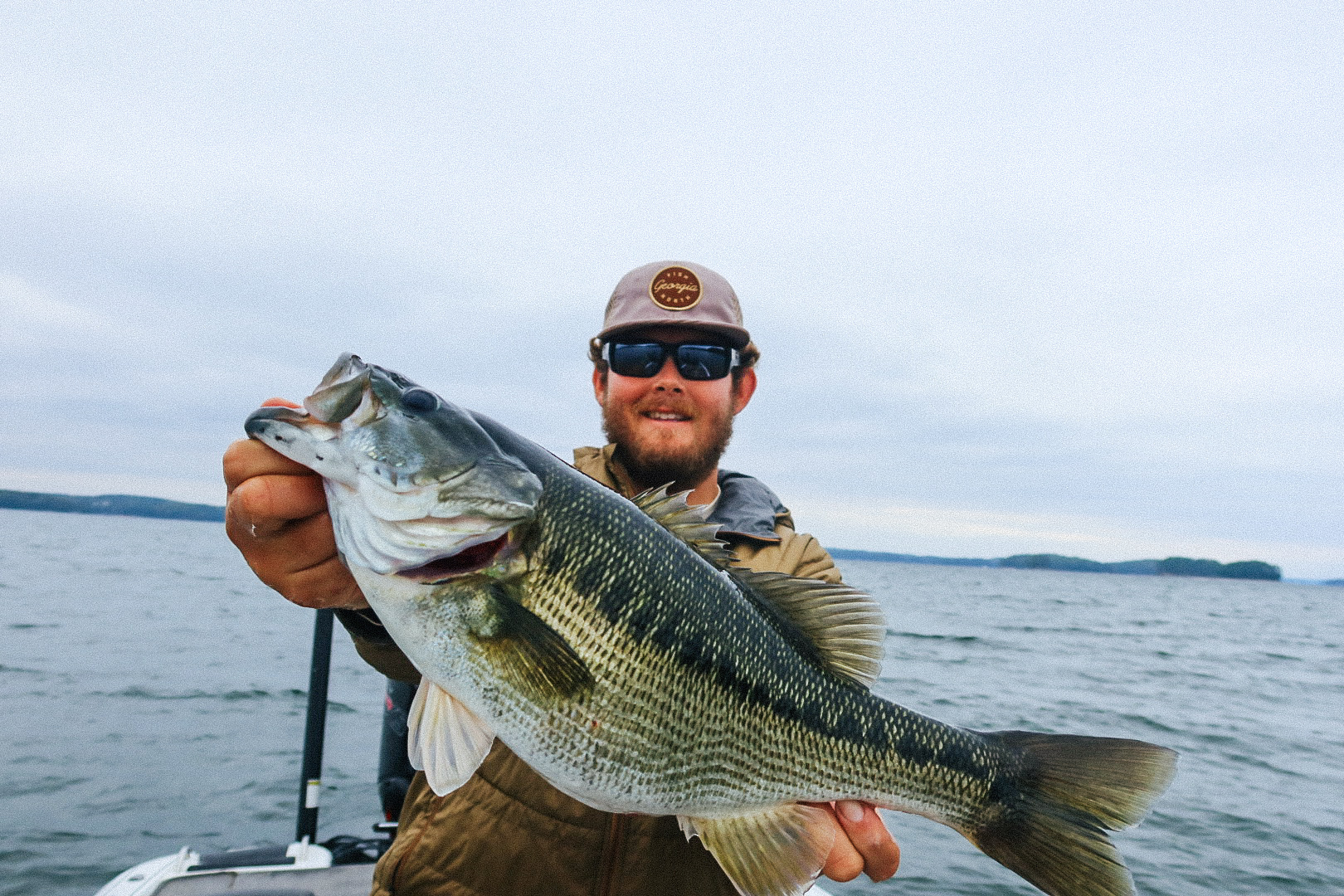Randy Pringle’s Frog Fishing Approach
As a longtime guide on the California Delta, Randy Pringle, aka “The Fishing Instructor,” has had plenty of epic days fishing a frog. The Delta is one of the most famous frog fishing hotspots in the west and possibly the entire country and part of the reason why bass anglers travel there to fish with Pringle.
Over the years, Pringle has experimented with frog fishing since it first hit the scene and he has developed an approach that generally leads to bigger bass and a better hook-to-land ratio.
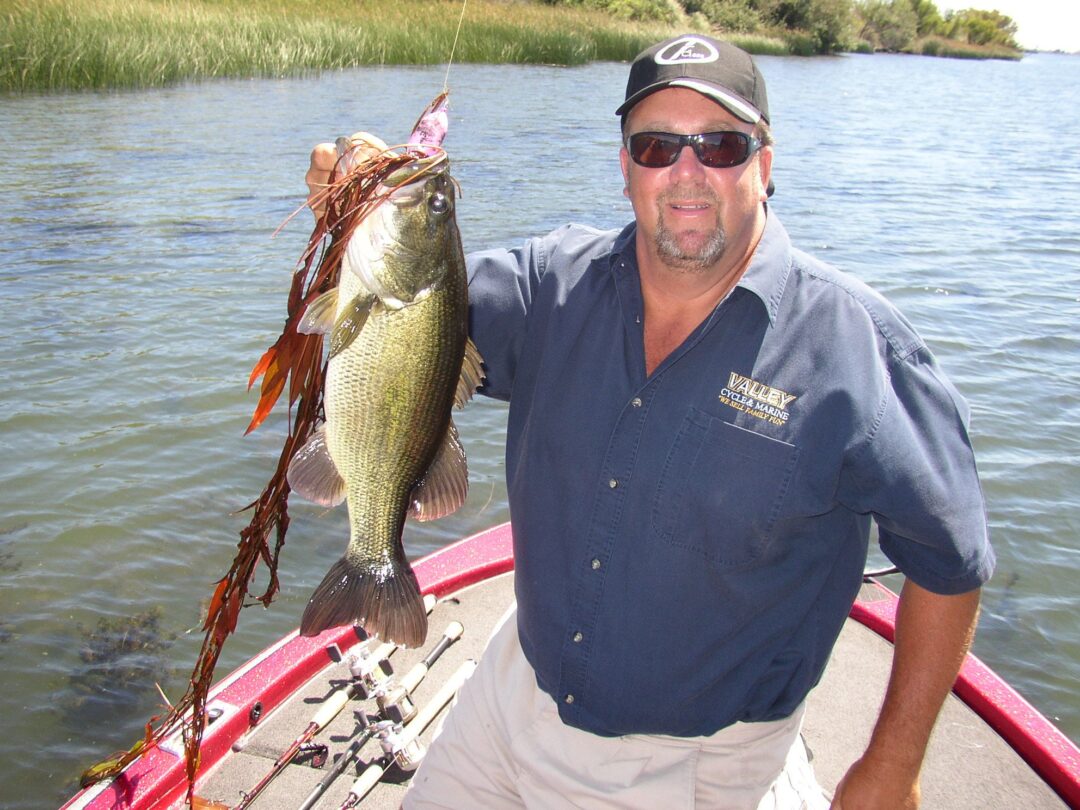
Where to Frog
On the Delta and other waters with surface vegetation, anglers flock to these areas to throw topwater frogs.
“I don’t look for those beautiful ‘cheese mats’ because everyone else is fishing them. I think the isolated cover is better,” Pringle says. “Instead, I want the isolated tules or brush. I’ll also look for weeds that come up to just below the surface and look for openings since most of the fish will come from those little pockets in the grass.”
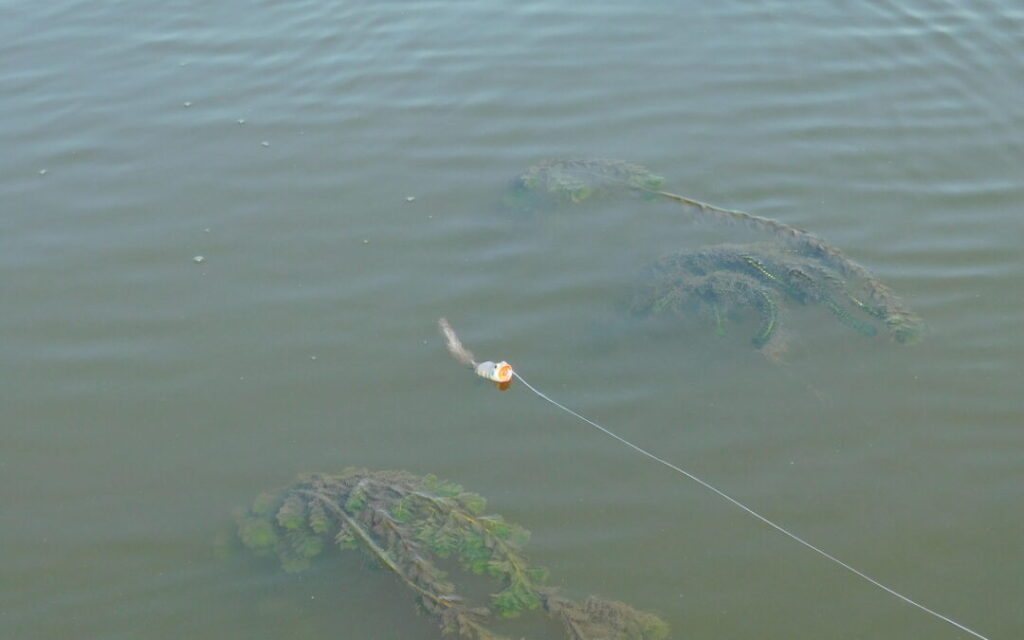
Pringle will also make calculated casts to these isolated pieces of cover to up his odds at catching fish.
“I’m not just fishing and hoping to luck into them,” says Pringle. “I like to cast past the cover and then work the bait into the ambush point. I want to bump into the tules or work it into little shaded pockets.”
Pringle will employ both Furbit the Frog and Poppin’ Furbit, depending on the cover.
“Both of them are really easy to work and both can be walked side-to-side,” Pringle says. The Poppin’ version has a great big mouth for a good popping sound and is excellent for open water. I like to work the Poppin’ Furbit and make little splashes to imitate a feeding baitfish.”
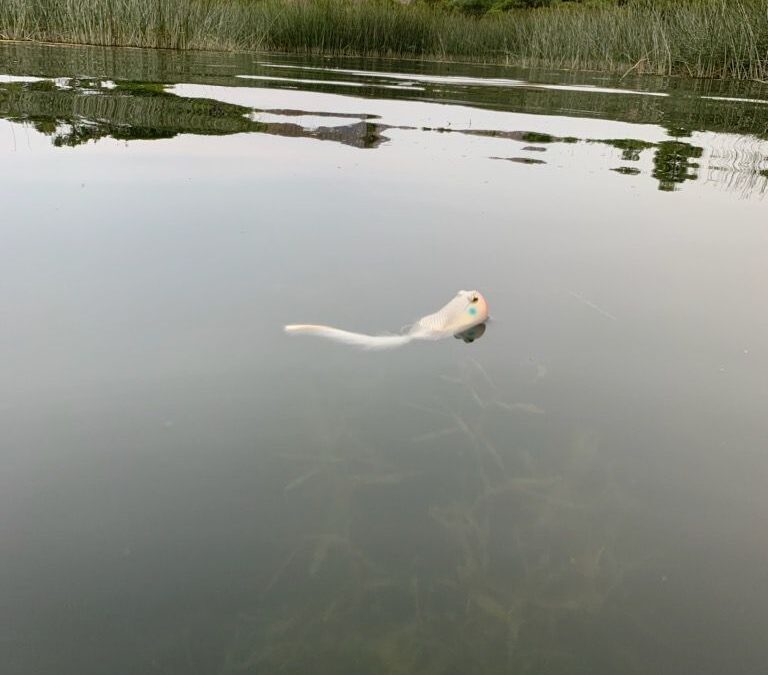
Frog Retrieves
As mentioned above, Pringle likes to work the bait into likely areas if he can.
“By casting past the target and bringing it into it, you won’t spook the fish,” Pringle says. During the cast, Pringle takes it a step further and will try to be as stealthy as possible. “If you move the butt of your rod right before it lands and thumb your reel, you can lay the frog down easily instead of making a big splash.”
Once the bait is in place, Pringle will begin retrieving and working it into the high-percentage areas.
“Once I get to the target, I pause it and let it sit and the natural rabbit fur on the Furbit adds to the look. It pulsates and makes it look natural even if the frog is sitting still. Rubber legs don’t open up near as much.”
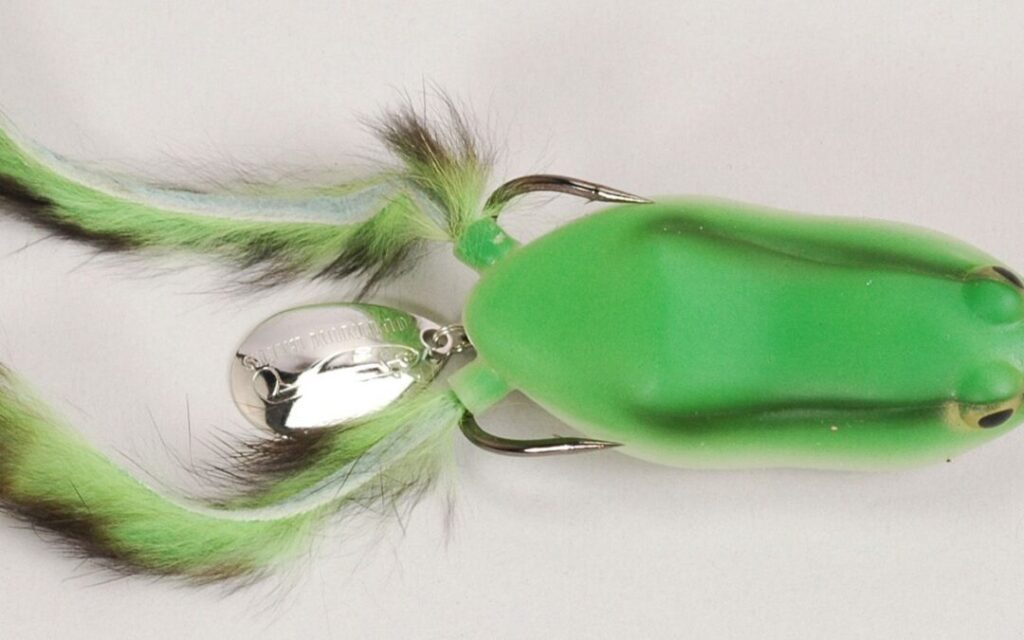
Besides the rabbit fur, the Furbit frogs also feature a rear spinner and Pringle is a believer.
“It is unique and gives it a little bit of flash to help trigger a strike,” he says. “You would think it would get tangled up in the grass, but it does a really good job coming through cover.”
Another thing Pringle implements during his retrieve is a mix of different speeds.
“I want to make it look injured,” Pringle says. “I mix it up with faster and slower movements, so the bait makes little darts and dashes. I’ll also change the pace and add pauses to make it look like a critter.”
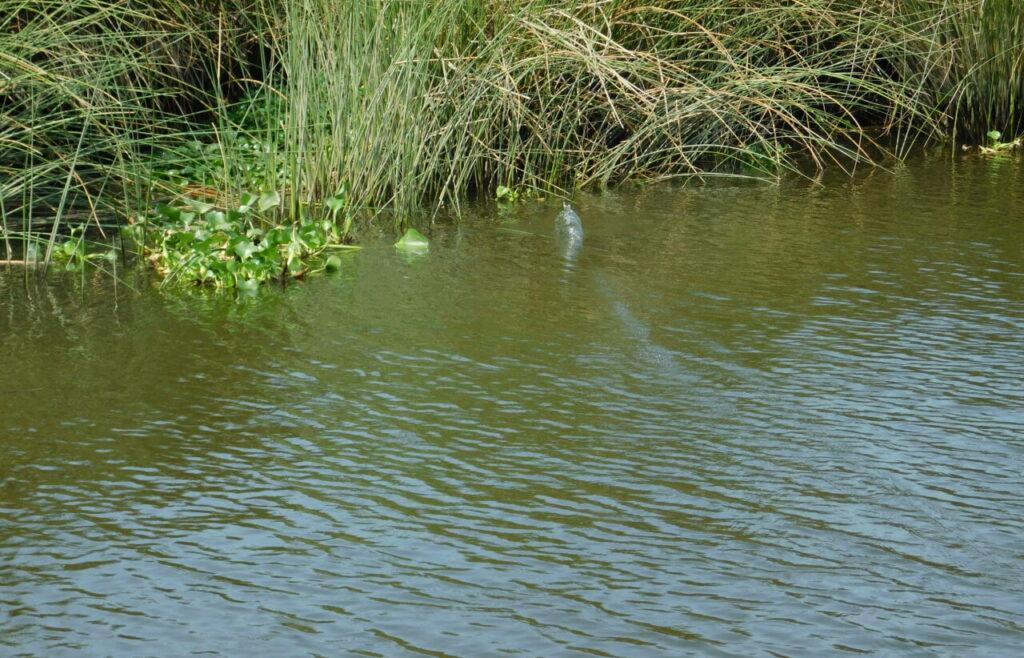
One thing he likes about the Furbit frogs is how well it hooks fish.
“Some frogs don’t collapse and you get the ‘volleyball effect’ when bass come up to get it and blow it out of the water,” he says. “Both of the Furbits collapse very well and that hook penetrates easily.”
Color and Gear Thoughts
There is a rainbow of colors for frogs, but Pringle keeps it pretty simple. He goes with a handful of colors that range from natural to more exotic.
“My top four colors would be Bluegill, Midnight (solid black), White Ice, and Cranberry Marble,” says Pringle. The Sunshine Blush is a bright pink color, but Pringle says it works wonders for frog fishing.
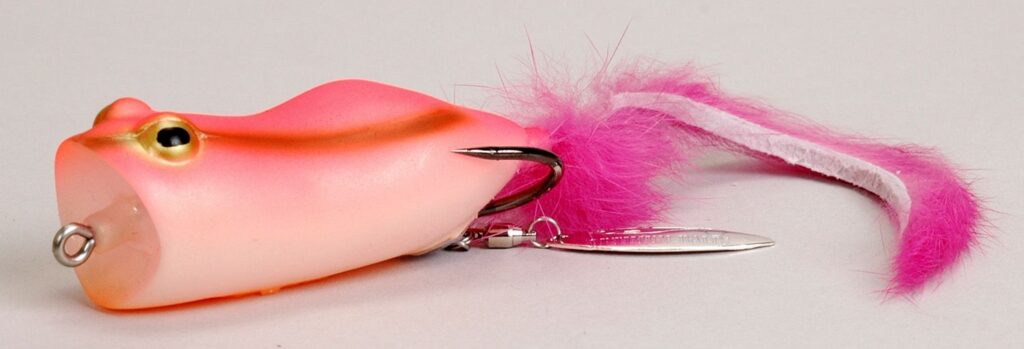
“That is one that probably doesn’t sell as well because people don’t think of using pink baits,” Pringle says. “But, pink has always been a trigger color. Think of the Bubble Gum color worms and things that people throw in the spring. I’m a big advocate of pink because it works.”
For his rod, reel, and line, Pringle has experimented to find the right balance between working the bait and still landing the fish he hooks.
“I like a 7’3” to 7’6” rod with some backbone, but still enough tip to walk the frog,” he said. “For reels, I stick with the 7.1:1 gear ratio because reels that are faster than that have less torque. It makes it really hard to get a ten –pound fish that’s wrapped in 15-pounds of weeds to the boat if you are using a faster reel and the wrong rod.”
When choosing a line, braided line is a must, but limpness is another consideration for Pringle. “Some braids out there may be really strong, but they are sometimes too rigid,” he says. “That makes it hard to walk the frog, so you want it to be both supple and durable.”
He likes either a 50 or 65-pound braid and will either use Spiderwire or Berkley X9 because both have the properties he is looking for.
After years of fishing and guiding clients on the California Delta, “The Fishing Instructor” has seen countless bass caught on frogs. Over time, he’s developed an approach that increases his odds of catching fish by mixing up his retrieve, focusing on the high-percentage areas, and choosing the right frog and gear to make sure those fish are brought to the boat.
Furbit the Frog
In a watery world of look-alike hollow rubber frogs, “Furbit the Frog” is a refreshingly individual amphibian. Many other hollow rubber frogs you see out there today look a lot like each other, and perhaps Furbit does too…. until you get to its legs! Its two legs are soft supple strips of rabbit fur. Furbit’s legs ripple and flutter in a manner that synthetic rubber or plastic legs never will.
Poppin’ Furbit
The Optimum Poppin’ Furbit is a weedless popper that can be thrown into the densest cover and thickest grass where it will remain snagless. With any other popper, you’ll be sorry if you even come close to a blade of grass or a twig. That’s because most popping lures have exposed treble hooks and they catch instantly on any little thing. That’s no fun. Most poppers cannot be thrown in or around heavy cover or grass.




